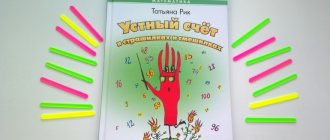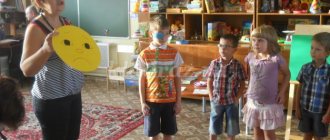Dancing for children: TOP 10 dance studios in Moscow
Academy of Arts "Muse"
st. Myasnitskaya, 13, building 20
Over the three years of the Academy’s existence, the best trends in dance and music have been collected here, which will allow your child to realize himself and achieve great heights in his chosen field of creativity.
The studio's profile is classical ballet. The school is taught by Bolshoi Theater soloists with many years of teaching experience. For children from 2.7 years old, the author’s program “Introduction to Ballet” has been created, which will help the child acquire all the necessary basic skills and discover talent.
The Academy of Sports and Ballroom Dances combines sports and art. Breakdance and hip-hop teams are perfect for boys who want to become strong and strong in spirit. There is a vocal academy for all children, where everyone can take lessons from a graduate of the Gnessin Academy of Music and improve their sense of rhythm.
Moscow School of Irish Dance Maria Singal
Preobrazhenskaya sq., 12
Jig, reel or hornpipe? At Maria Singal's school you can learn all the main types of solo and pair Irish dances! And not only to learn the basics, but also to become a professional: students of the institution often participate in international competitions. Now the school's arsenal includes first place in group Irish dancing at the European Championships, second places in solo programs at world competitions and other awards. Perhaps it's all about the quality of teaching. The founder of the school, Maria Singal, is the first certified teacher of Irish dancing in the Russian Federation (TCRG) and a judge of international championships (ADCRG), all teachers undergo advanced training courses abroad. In addition, the lessons do not just study the elements and patterns of dance. The studio provides stretching classes, a special “show class” for stage performances, and exercises to develop a sense of rhythm.
It’s worth bringing your child to Maria Singal’s school and... staying on your own: the groups accept adults without any age limit.
Gulliver
st. 1st Tverskaya - Yamskaya, 8
Classical choreography, hip-hop, folk, pop or club dancing - at the Gulliver school there are directions for every taste and age. This is not just about improving posture or showing basic movements. In “Gulliver” they give the opportunity to express themselves through music and dance, charge them with energy, teach them not to be afraid of the stage and prepare them for a brilliant future. Students of the school participate in popular TV shows, demonstrate items from the YanaStasia brand, appear in video clips and easily enter theater universities in the capital.
Training for schoolchildren takes place 3 times a week for 2 hours and costs 5,500 rubles per month. Children under 7 years old study twice a week for 1 hour. The cost of training is 4000 rubles per month.
House of dance in the cultural center "ZIL"
st. Vostochnaya, 4, building 1
The House of Dance is culturally called the epicenter of dance creativity. You can find inexpensive programs here for children of any age and skill level.
In ZIL you are invited to enroll in ZumbaKids classes - for exciting children's parties for children from 3 years old. Does your soul lie in the classical direction? The children's ballet theater in the Palace of Culture has existed since 1982; classes for children over 4 years old include rhythmics, gymnastics, classical and modern dances and even stage practice. And “Young Zilovets” is the oldest folk dance ensemble; teenagers will be interested in visiting the hip-hop, street dance, and popping studio. There are also areas of ballroom and pop-sports dance. Most recently, the Dance Theater opened in ZIL, an association for children 3-12 years old, designed to teach students modern dance. There are budget places.
Eco-club “Umnichka”
Mozhaiskoe highway, 45, building 1
Moscow dance studio Eco-club “Umnichka” is a cozy and, importantly, safe space for children of different ages. Safe in the truest sense of the word, environmentally friendly and hypoallergenic materials were used to decorate the premises.
You can sign up for dancing at the development center from 2.5 years old; for the little ones, the optimal direction will be “Dance Rhythm”. For older children - pop dancing (from 3.5 years old), choreography in the ballet hall - from 4 years old. Well, schoolchildren will certainly like the modern trend - hip-hop, house and club children's dances. All courses are aimed at small groups of up to 8 dancers; at Umnichka they are taught by “star teachers”. On average, the duration of one lesson is 45-50 minutes.
Yegor Simachev Ballet Workshop
st. Karetny Ryad, 3, building 7
You can experience beauty through classical ballet within the walls of Yegor Simachev’s workshop. Here they instill a love of dancing in children aged two years and older. The best of the most famous choreographic studios in Moscow has many branches, so it will not be difficult to sign up for classes as close to home as possible.
Ballerinas of the Bolshoi Theater and professional choreographers teach beauty and lightness, magical flight in dance. Children can put on a tutu and special shoes for the first time during a trial lesson to feel in their hearts whether ballet is right for them. And even if the child does not want to go on stage in the future, in the studio he will learn to think creatively, work on himself, and acquire graceful posture. Lessons for little dancers are built in a special rhythm, alternating with play exercises, so everyone will be comfortable.
A subscription for four classes costs 4,000 rubles, a one-time visit costs 1,250 rubles. You can study either in a group with peers or individually. Duration – from one hour.
International Center for Dance and Performance "TSEKH"
st. Skakovaya, 24
Parents and their children can find out what contemporary dance is by enrolling in the dance school of the Tsekh association. This international center is able to convince that modern dance is a special genre.
However, the program covers not only the study of steps; students learn the basics of creative movement and participate in non-verbal theater. All teachers of the “Workshop” are young and energetic people who are in love with their work. For children there is a division by age: 3-5, 6-9, 10-12 years. Recruitment for the group is carried out every season.
TODES
Paveletskaya embankment, 2, BC “River side”
Enrollment in the dance school under the direction of Alla Dukhova starts from the age of 4. Show ballet “Todes” is a world-famous brand that offers group training for children. Moscow has many branches, and there are no less of them in the regions, so you will definitely be able to enroll in a school closer to home.
You do not need to have a certain level of physical fitness to attend rehearsals. You can start getting acquainted with classical ballet, hip-hop, jazz-modern and other dance styles from scratch. Each training session - individual lessons are not provided - is built according to a certain scheme: warm-up, learning new elements, staging a dance routine and consolidating what has been learned. Children in the Todes show ballet will be able to participate in competitions, studio reporting concerts, outdoor events and more. Lesson duration – 1 hour 15 minutes.
GALLADANCE
Krasnopresnenskaya embankment, 12
A boost of vivacity, self-confidence and impeccable posture, coupled with a good mood, can be found by choosing your favorite training program at the Galla Dance dance school.
Enrollment in children's groups starts from 4 years old; the Zumbatomic direction is open for the youngest. From the age of 6 you can sign up for oriental or ballroom dancing, including fiery Latin American dances. From 13 years old - welcome to ClubDanceTeen. What’s noteworthy is that parents of their child can get detailed advice from the school’s choreographers to decide which dance style is best for their child. The trial lesson is free, individual or group training is possible (from 7 to 20 people in a team)
ABOVE THE MOUNTAINS
st. Malaya Ordynka, 25
Children can also learn to dance the sparkling lezginka, charging those around them with positivity. Complex, but bewitching art, demonstrates lightness, grace, refined movements and virtuoso music - how can you not like Caucasian dances?
The school “Above the Mountains” offers training in Caucasian and Transcaucasian dances for children over 3 years old. Groups are recruited year-round; you just need to have a tremendous desire to dance. The cost of one lesson for children is 350 rubles, a subscription for 8 lessons is 2800 rubles, there are individual lessons.
We are waiting for the result
You should not listen to teachers who promise to make your child almost a star in just a few lessons. Even the most powerful creative potential is limited by physiology, so progress will be gradual. As a result of regular training in the dance section, the child will learn to control his body, develop a muscular corset, and become resistant to physical activity. In addition, in dance, children will learn to throw out energy and emotions, to realize themselves.
Other important skills that develop gradually include persistence and determination. Almost all children go through an adaptation stage, when the novelty of sensations disappears and interest in activities disappears. It is important to overcome this stage, since the child must understand that results in any endeavor can only be achieved through hard work.
Setting goals correctly
You need to decide in advance why exactly you are sending your child to dance. On the one hand, you can limit yourself to general physical and aesthetic development, and on the other hand, you can aim for serious achievements in the form of victories at city, regional and even international competitions. A child’s passion for dancing may well develop into a full-fledged professional career; the main thing is not to discourage the child from doing what he loves. In this regard, it is important to choose a competent trainer; not only the quality of training, but also the correct motivation depends on him. A good teacher knows exactly not only how to get the best results from students, but also how to interest them. In addition, after a trial lesson, he will be able to draw conclusions about the child’s potential in the chosen dance direction.
Which dance direction should I choose?
The choice of dance direction and school depends on the age and character of the child. This can be classical ballroom dancing or various genres of modern choreography. Unlike classics, modern choreography does not require a partner, complex regulations and costumes, which is why modern, hip-hop, R'n'B, breakdancing, jazz-funk and modern jazz, street jazz and others are so popular directions.
Already at the age of 5, it becomes clear what kind of temperament a child has, what kind of music he likes, how well he adapts and interacts in a team. It is necessary to choose a dance direction taking into account the wishes of the child, since the ideas of generations about beauty are very different. In the end, you can always try different styles of dancing, and only then make a choice.
Dance club program “Dance Kaleidoscope” work program on the topic
Municipal preschool educational institution "Ryabinka"
Dance club program
"Dance Kaleidoscope"
Educator
Buryakova N.V.
2014
Explanatory note
The content of this program includes musical and psychological training for children 4-5 years old, developing will, attention, mobility and flexibility, also aimed at developing musical abilities, creative imagination, fantasy, the ability to improvise in movement to music, which requires free and conscious control of the body. Moving from simple to complex, from children's songs to symphonic works, the child gradually becomes familiar with the world of beauty, passing through music, the complex world of feelings and images, while playing at the physical, visual and emotional levels with the specific language of musical expressiveness.
The variety of compositions in terms of direction, complexity and intensity of movements allows them to be used in any form of organizing work with children, from morning exercises to holiday matinees. The repertoire used within the program is musically expressive, exciting, awakens fantasy and imagination, develops the expressive capabilities of the body and at the same time is accessible for performance.
The most important indicator of the success of musical and rhythmic education of a child aged 4-5 years is interest in the very process of movement to music, expressiveness of movements and the ability to convey the character of music and a playful image in plasticity. With insufficient coordination, dexterity and precision of movements (which at this age corresponds to the norm), the expressiveness of children's plasticity reveals creative talent and musicality.
Goals and objectives of the dance club
The main goal of the dance club is the physical activity of preschool children.
Main goals:
- develop strength, endurance, agility, flexibility, coordination of movements, the ability to overcome difficulties, strengthen the will;
- improve children's health;
- contribute to the development of a sense of rhythm, tempo, performance skills in dance and artistic taste;
- form beautiful manners, gait, posture, expressiveness of body movements and poses;
- relieve shyness, tightness, complexes;
- teach to rejoice in the successes of others and contribute to overall success.
Organization of dance club activities
The work of the dance club is based on common principles and ensures the integrity of the pedagogical process.
Classes in the dance club are conducted in accordance with the schedule of classes, taking into account the age characteristics of the students, as well as taking into account the requirements of SanPiN 2.4.1.2660-10.
Classes for children are held in the music room once a week. Lesson duration - 15-20 minutes.
To report to the parents of students for the quality of the educational service provided, the head of the dance club holds open events at least once every six months.
Documentation of the dance club leader
The head of the dance club is responsible for the availability, content and culture of maintaining the following documentation:
- notebook for keeping track of children's dance club attendance;
- long-term calendar plan for the dance club;
- the result of identifying the levels of development of children’s motor activity at the beginning and end of the school year;
- map of preschool children's participation in events.
Club work plan
| March 1 lesson | "Waiting for Spring" | Consolidating the ability to reproduce rhythmic pulsation, a simple rhythmic pattern, and a downbeat in movement. Consolidating the skills of dance movements: stomping step, half-squat, spinning on a stomping step | Learning spring round dances. Dance “Sun Rays”, “Crows”, “Sparrows”, “Piglets”. Musical outdoor games of children's choice |
| 2 class | "Musical gifts for mom and grandma" | Development of skills to perform dance movements for demonstration and independently. Learning dances with mothers. Strengthening the ability to start and finish movements with music | Dance “Buttons”, “Two Drops”, exercise with flowers “Waltz” Kishko, pair dances with mothers as shown |
| Lesson 3 | "Mom's smile" | Repetition of dances and exercises learned for the holiday. Creating conditions for independent performance of the holiday repertoire | Dance “Buttons”, “Two Drops”, exercise with flowers “Waltz” Kishko, pair dances with mothers as shown |
| Lesson 4 | "Meeting the Birds" | Strengthening the skills of fast running, jumping on two legs, soft springs | Exercise “Sparrows” (music by T. Vilkoreiskaya), “Birds and Crows”, Repetition of spring round dances. |
| April 1 lesson | "Drips and Streams" | Improving light running skills, the ability to start and finish movements along with music, and perform lane changes in accordance with parts of the music | Exercise “Streams” (easy running - music by K. Weber). Repeating paired dances at the request of the children |
| 2 Class | "Spring Breeze" | Improving light running skills, the ability to start and finish movements along with music. Strengthening the ability to perform swinging movements with your arms (on a spring) | Hand exercise “Blow and Wind”, paired and character dances with formations of two or three figures. Construction of exercises in easy running “Streams”. Outdoor games with music. |
| Lesson 3 | "Meeting dear guests" | Development of skills to perform movements together with an older child (development of communication skills) Performing movements to demonstrate, improvising movements in accordance with the nature of the music | Dance games “Find yourself a partner”, “Colorful game”, “Birds and Crows”, pair dance for 2-3 figures (optional) |
| Lesson 4 | "Our Favorite Toys" | Improving the ability to perform simple dance movements: half-squat for boys, twirling in pairs, alternately placing legs on heels, twirling in place, etc. | Dance “Tumbler”, “Dolls and Bears”, “Teddy Bear”. Repetition of familiar figurative play compositions and outdoor games. |
| May 1 lesson | "Favorite songs for kids" | Improving the ability to perform simple dance movements as demonstrated by an adult when playing children's songs | Dance “Buttons”, “Two Drops”, “One, Palm” music by E. Zaretskaya. Repetition of familiar couple dances (optional) |
| Lesson 2 | "Feast of the First Flowers" | Improving the ability to swing your arms (on a spring). Consolidating the skills of changing formations in space, moving in a circle, scattered, “snake” behind the leader | “Magic Flower” music by Y. Chichkov (or another of your choice). Repetition of familiar dances and figurative musical and rhythmic compositions (optional) |
| 3 class | "Festival of spring rays" | Consolidation of the skill of easy running, stomping step, jumping on two legs. Consolidating the skills of changing formations in space, moving in a circle, scattered, “snake” behind the leader | Exercise with flowers and green twigs (music of your choice), figurative and playful compositions “Leopold the Cat”, “Piglets”, “Birds and Crows” |
| Lesson 4 | Dandelion Festival" | Fostering children's sustainable interest in musical and rhythmic activities. Expansion and improvement of motor skills and abilities. | “Dance with Flowers” (repetition). Musical and rhythmic composition “song about summer” music. E. Krylatova |
Monitoring children's development
The main method of pedagogical diagnostics is systematic observation of children’s manifestations in musical and rhythmic activities, assessment of their performance of various game tasks. During the observation, the teacher evaluates the children’s manifestations, comparing them with each other, focusing on the best indicators identified for a given age (in a given group).
Card for diagnosing the level of musical and psychomotor development of a child
| Child's name | Diagnostic time frame | ||
| options | Beginning of the year | Mid year | The end of the year |
| Interest and need for musical movement | |||
| The ability to reflect character in movement and use basic means of expression) | |||
| Emotionality (expressiveness of performance) | |||
| Creativity (ability to improvise in movement to music, originality, variety of movements used) | |||
| Development of motor skills (Availability of various types of movements in accordance with the program and content) | |||
| Mobility (lability) of nervous processes (the ability to switch from one movement to another in accordance with music, change the direction of movement, rearrange) | |||
| Formation of correct posture | |||
| Formation of spatial orientation skills |
Assessment of children 4-5 years of age
High level – the ability to convey the character of the melody, independently start moving along with the music, change the movement for each part of the music
Intermediate level - the movements express the general character of the music; the tempo, beginning and end of the movement to musical accompaniment do not always coincide.
Low level - the movement does not reflect the nature of the music and does not coincide with the tempo of the rhythm, as well as with the beginning and end of the piece
Emotionality – expressiveness of facial expressions and pantomimes, the ability to convey in facial expressions, posture, and gestures a diverse range of feelings, based on the music and the content of the composition (fear, joy, horror, surprise, delight, anxiety).
Emotional children often sing along while moving, say something, and wait for the teacher’s assessment after the movement. In unemotional children, facial expressions are poor, movements are inexpressive, assessed by external manifestations “+”, “- “
Creativity is the ability to improvise to familiar and unfamiliar music based on movements mastered in classes, as well as to come up with your own, original steps. The assessment is specified depending on the age and level of training of the child. Creative talent is manifested in special expressiveness, non-standard plastic means and the child’s enthusiasm for the very process of moving to music. The degree of expressiveness and originality is also assessed by the teacher during the observation process: “+”, “-“.
Development of motor skills - mastering various types of movements in accordance with the program content: basic movements (walking, running, jumping movements), general developmental (for various muscle groups), imitation (figurative play), dancing, dancing, gymnastics with and without objects . The quality and confidence of performing various movements, the variety and volume of movements performed are assessed.
Mobility (lability) of nervous processes is manifested in the speed of motor reaction to changes in music. The norm, the standard, is the compliance of the execution of exercises with the music, the ability to subordinate movements to tempo, rhythm, dynamics, etc. And in case of pronounced difficulties “- “.
The formation of correct posture is assessed on the basis of observations and medical data - the norm is “+”, the problem is “-“.
The formation of spatial orientation skills is assessed on the basis of observations of the execution of various formations in accordance with age capabilities, the ability to perform movements in the desired direction (right-left, forward-back), and the ability to perform movements with the right and left hand (leg).
As a result of the diagnosis, the teacher can calculate the average total score for a general comparison in the child’s development over a certain period of time, and build a diagram or graph of development indicators. Pedagogical diagnosis is essentially a subjective assessment. Therefore, it is not the number of points that is important, but the severity of the dynamics of development.




